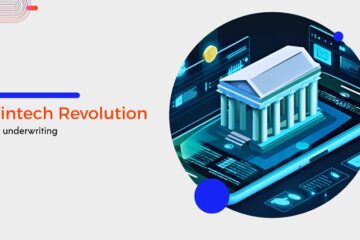Peer-to-peer (P2P) lending is transforming the traditional lending model by enabling individuals to borrow money directly from other individuals without involving a traditional financial institution like a bank. Facilitated by online platforms, P2P lending provides an alternative source of credit for borrowers and new investment opportunities for lenders. Over the past decade, P2P lending has emerged as a powerful financial tool that offers flexibility, transparency, and more competitive interest rates.
What Is Peer-to-Peer Lending?
Peer-to-peer (P2P) lending connects borrowers with individual lenders through digital platforms, cutting out traditional financial intermediaries like banks. These online platforms act as marketplaces where borrowers can request loans, and lenders can choose to fund those loans in return for interest.
- Borrowers: Typically, individuals or small businesses looking for personal loans, business capital, or debt consolidation. Borrowers can often secure loans at competitive rates, especially if they have a good credit score.
- Lenders: Individuals looking to invest their money in loans in return for interest payments. Lenders can choose loans based on factors like risk level, borrower profile, and return rates.
Popular P2P platforms include LendingClub, Prosper, and Funding Circle.
How Peer-to-Peer Lending Works
The P2P lending marketplace brings both the lender and borrower in a single platform. It solve the banking model’s inefficiencies by developing online marketplaces that use complex algorithms to match borrowers with investors according to each party’s specifications.

- Borrower Application: A borrower applies for a loan through a P2P lending platform by providing personal and financial details such as the loan amount, purpose, and credit score.
- Credit Assessment: The P2P platform assesses the borrower’s creditworthiness and assigns a risk category that helps lenders evaluate the loan’s risk. This step may include a credit score check and other financial information.
- Loan Listing: The loan request is listed on the platform’s marketplace, where potential lenders can review the details and decide whether to invest.
- Funding: Lenders, who could be individuals or institutional investors, choose how much they want to lend. Some platforms allow multiple lenders to contribute to a single loan, spreading the risk.
- Loan Disbursement: Once the loan is fully funded, the platform disburses the loan amount to the borrower. The borrower makes regular payments, including interest, back to the lenders.
- Repayment: The platform handles the repayment process, collecting payments from the borrower and distributing them to the lenders based on the agreed interest rate and loan term.
Benefits of Peer-to-Peer Lending
Both the lender and borrower can be benefited from Peer-to-Peer Lending. The benefits ranges from low cost to process efficiency and user satisfaction.
- For Borrowers
- Lower Interest Rates: P2P lending platforms typically offer more competitive interest rates compared to traditional banks, especially for borrowers with good credit. This is possible because P2P platforms have lower operating costs than banks.
- Fast Approval and Access: Borrowers can receive funds much faster than through traditional bank loans. Many P2P platforms have a streamlined approval process, with funds disbursed within days.
- Access to Credit: P2P lending can provide loans to borrowers who may have difficulty securing loans through traditional banking channels, such as individuals with less-than-perfect credit or small businesses seeking working capital.
- For Lenders/Investors
- Higher Returns: Lenders on P2P platforms can potentially earn higher returns compared to traditional savings accounts or other low-risk investments like bonds. The interest rates on P2P loans are higher, reflecting the risk level.
- Diversification: P2P lending allows lenders to diversify their investments by lending small amounts across multiple loans, reducing the risk of significant losses from a single loan default.
- Control Over Investment: Lenders have the flexibility to choose which loans they want to fund, based on the borrower’s profile, loan purpose, and risk category.
Risks of Peer-to-Peer Lending
While P2P lending offers attractive benefits, it is not without risks, especially for lenders.
1. Risk of Default
The biggest risk in P2P lending is borrower default—the borrower’s failure to repay the loan. Unlike traditional bank loans, P2P loans are often unsecured, meaning they do not require collateral. If a borrower defaults, the lender could lose some or all of their investment.
2. Lack of FDIC Protection
P2P lending investments are not insured by the FDIC (Federal Deposit Insurance Corporation), which means lenders do not have the same protections as they would with savings accounts or certificates of deposit (CDs) held at traditional banks.
3. Platform Risk
Since P2P lending is conducted through online platforms, there is the potential risk of the platform itself going out of business or facing operational difficulties. While most platforms have protections in place, such as third-party loan servicers, platform failure could complicate the lending and repayment process.
4. Interest Rate Volatility
Interest rates on P2P loans can vary significantly depending on market conditions, the platform’s policies, and the borrower’s risk profile. Lenders must balance the potential for higher returns with the increased risk associated with higher interest rates.
The Evolution of Peer-to-Peer Lending
P2P lending began as an innovative way to democratize access to loans, and over the past decade, it has evolved into a mainstream financial service. It has transformed from a niche service for individuals looking to borrow or invest outside traditional banking channels to a legitimate alternative for both personal and business loans.
Key Developments in P2P Lending
- Institutional Participation: In recent years, institutional investors, including hedge funds and asset managers, have entered the P2P lending space, contributing to larger loan volumes and greater liquidity.
- Business Lending: Initially focused on personal loans, P2P platforms have expanded to cater to small businesses, particularly those that may not qualify for traditional bank loans. Platforms like Funding Circle specialize in providing business loans through a peer-to-peer model.
- Technology and AI: With the rise of FinTech, P2P lending platforms are leveraging technologies like artificial intelligence (AI) and machine learning to improve credit assessments, automate loan approvals, and enhance user experience.
Peer-to-Peer Lending in the Global Context
P2P lending has seen significant growth in regions like North America, Europe, and Asia. Each region has adopted P2P lending at varying speeds, often driven by differing regulations and levels of financial inclusion.

- United States: The U.S. has seen rapid adoption of P2P lending, particularly for personal loans and debt consolidation. Platforms like LendingClub and Prosper have become leaders in this space.
- United Kingdom: The U.K. has one of the most mature P2P lending markets, thanks to clear regulations and the presence of platforms like RateSetter and Zopa.
- China: In China, P2P lending grew rapidly, but regulatory challenges and instances of fraud caused the government to crack down, forcing many platforms to shut down. However, the Chinese market remains a key player in P2P lending globally.
- Emerging Markets: In countries with underdeveloped financial systems, P2P lending has the potential to offer underserved populations access to credit, particularly for small business loans and microloans.
The Future of Peer-to-Peer Lending
As FinTech continues to disrupt traditional financial services, P2P lending is expected to grow, driven by technological innovations, regulatory developments, and market demand.
Potential Trends
- Integration with Blockchain: Blockchain technology could further enhance transparency and security in P2P lending, allowing for decentralized lending platforms and automated contract execution.
- Open Banking: With the rise of open banking, P2P lending platforms may gain access to better financial data, allowing for more accurate credit risk assessments and personalized loan products.
- Increased Regulation: As P2P lending grows, regulators are likely to introduce stricter guidelines to protect both lenders and borrowers, ensuring the sustainability of the sector.
Peer-to-peer lending offers a revolutionary approach to borrowing and lending, connecting individuals directly without traditional financial intermediaries. It has democratized access to credit and created new investment opportunities. While it comes with inherent risks, the P2P lending model’s flexibility, transparency, and potential for higher returns make it an attractive alternative for many.
As the industry evolves, P2P lending will continue to play a significant role in the broader FinTech revolution, helping reshape the future of finance for both borrowers and lenders.








